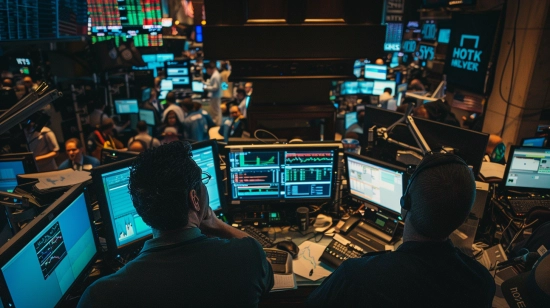| Key Points: – Wolfspeed is set to receive a $750 million grant from the U.S. government, boosting its shares over 30%. – The chipmaker plans a nearly 30% production capacity increase as part of a $6 billion investment strategy. – The funding aims to strengthen the U.S. semiconductor industry amid rising demand for energy-efficient technologies. |
Wolfspeed, a leading manufacturer of electric vehicle (EV) chips, has announced that it will receive $750 million in government grants to support its new silicon carbide wafer manufacturing plant in North Carolina. This funding is part of the U.S. Commerce Department’s initiative to bolster domestic semiconductor production, a critical sector for the nation’s economy and technological security. Following the announcement, Wolfspeed’s stock price surged by over 30%, reflecting investor optimism about the company’s future prospects.
The Commerce Department emphasized that the preliminary funding agreement requires Wolfspeed to take steps to strengthen its balance sheet to safeguard taxpayer funds. In addition to the government grant, Wolfspeed has secured $750 million in new financing from a consortium of investment funds led by Apollo Global Management, the Baupost Group, Fidelity Management & Research Company, and Capital Group. This dual approach to funding will provide a solid financial foundation for the company’s ambitious expansion plans.
Wolfspeed specializes in producing silicon carbide chips, a more energy-efficient alternative to traditional silicon-based components. These chips are crucial for a variety of applications, including the transmission of power from electric vehicle batteries to motors, making them particularly important in the rapidly growing EV market. The company counts major automotive manufacturers such as General Motors and Mercedes-Benz among its customers, highlighting the increasing demand for advanced semiconductor technologies in the automotive sector.
As part of its strategy to enhance production capabilities, Wolfspeed is also expanding its silicon carbide device manufacturing facility in Marcy, New York, aiming to increase production capacity by nearly 30%. This expansion is a key component of its previously announced $6 billion capacity growth plan, which is designed to position Wolfspeed as a market leader in the semiconductor industry.
The recent funding announcement underscores the strategic significance of Wolfspeed’s technology, especially as the U.S. government intensifies efforts to revitalize its semiconductor industry. The company’s devices are used not only in the automotive sector but also in renewable energy systems and artificial intelligence applications. This diverse application range positions Wolfspeed well to benefit from ongoing investments in clean energy and technological innovation.
In addition to the grant and new financing, Wolfspeed anticipates receiving $1 billion in cash tax refunds from the “48D” advanced manufacturing tax credit under the Chips and Science Act. This further financial incentive underscores the government’s commitment to supporting domestic semiconductor production, especially as competition with global players intensifies.
However, despite these positive developments, Wolfspeed’s stock has faced significant challenges this year, with its value plummeting nearly 75% due to a sharp slowdown in electric vehicle demand. The company’s new 2 million-square-foot silicon carbide wafer factory in Chatham County, North Carolina, which was announced in 2022, is expected to deliver wafers by summer 2025 to meet its own chip manufacturing needs.
As Wolfspeed moves forward with these strategic initiatives, the company is poised to play a critical role in shaping the future of the semiconductor industry in the U.S., driving innovations in electric vehicles and renewable energy technologies.














